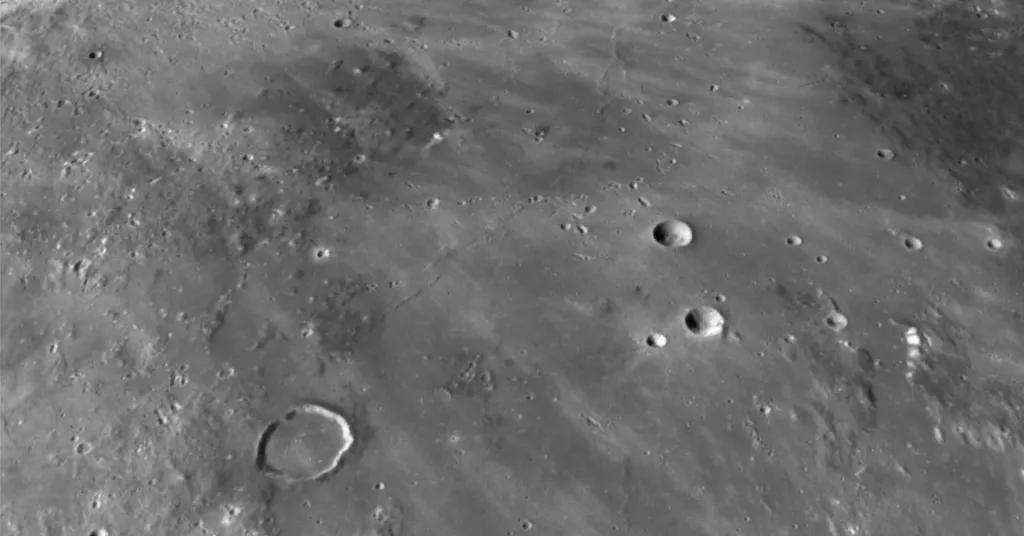- August 29, 2025
- By Emily C. Nunez
University of Maryland researchers revealed this week that the central region of the moon’s near side has been hiding a Utah-sized secret in plain sight. The Sinus Aestuum dark mantle deposit—home to the glass and mineral remnants of volcanic eruptions billions of years ago—is unlike anything else found on the moon.
“At the center of the lunar near side, you can see it,” study co-author Jessica Sunshine, an astronomy and geology professor at UMD, said of the deposit. “It’s big, it’s dark—we just didn't know it was different, even though we've been staring at it for millennia."
Published in the Journal of Geophysical Research: Planets, the UMD team’s research confirmed that, unlike other materials formed by volcanic eruptions on the moon, the Sinus Aestuum deposit is extremely rich in a mineral called spinel, and larger than previously thought. The study analyzed data collected remotely by NASA’s Moon Mineralogy Mapper instrument.
“It has a mineralogy you don't see anywhere else on the lunar surface, and because of that, it's telling us that some unique volcanic process has occurred,” said the study’s lead author, UMD geology Ph.D. student Cosmo Sikes.
The research team, which also includes geology Associate Professor Megan Newcombe, is unsure of the exact volcanic mechanism that created these deposits. However, their circular distribution suggests they could have come from a large eruption in a centrally located source.

While eruptions were common in the moon’s early history, the unusual composition of these deposits raises new questions about volcanism on the moon. To create an Earth-based equivalent of the Sinus Aestuum deposits, Sikes is now synthesizing spinels in Newcombe’s Planetary Volcanism Laboratory, which has furnaces that can reach 2,900 degrees Fahrenheit and mimic the conditions of a lunar volcano.
Studying deposits like the ones found in the Sinus Aestuum region enables researchers to work backward, helping them piece together volcanic processes that happened millions or billions of years ago. This same approach could be used to explain how volcanism functions in a wide range of planetary environments.
The moon's Sinus Aestuum region is home to dark spinel-rich deposits that may have been formed by a unique volcanic process. (Image credit: Lunar Reconnaissance Orbiter Camera/NASA/Arizona State University.)